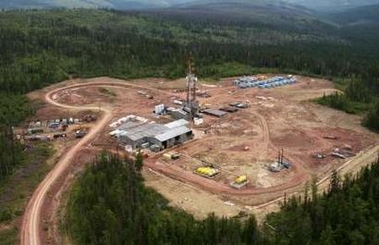
Russian Oil and Gas in 2030
Publication: Eurasia Daily Monitor Volume: 6 Issue: 164
By:

The once all-powerful Russian energy sector appears to be on unpredictable and shaky grounds today. The development of the giant Kovykta gas field, once considered as a major project, has been placed on hold; the jewel in the crown Shtokman field is in trouble; Sakhalin-2 is being forced to divert its gas to the strategic Russian Far East for domestic consumption, while original plans to sell this gas to China are being abandoned.
These fundamental changes come at a time when less then transparent deals are taking place in the ownership of Russian oil and gas companies. Are these developments related and if so, what impact, if any, could they have on European and Asian energy security?
On August 28, the Russian newspaper Kommersant reported that Moscow intends to invest $1.8-2.1 trillion in the oil and gas business by 2030 to increase production in order to keep up with projected European and Asian demand for Russian hydrocarbon exports as well as with increasing Russian domestic consumption.
The new investment strategy envisions a three-stage program – 2009-2015, 2015-2022 and 2022-2030. The costliest of which is projected to be the third stage, during which investments into the oil sector are projected at $313-321 million and the gas industry is expected to receive $284-299 million. Kommersant noted that as a result of these investments, gas production would increase by 4 percent as compared with 2008. Oil production is expected to rise by almost 9 percent.
The projections for future production increases seem to contradict the statistics for 2009, which show that in the first half year gas production fell by a record 20.8 percent (Gazprom’s figures alone decreased by 24.4 percent), while gas exports fell by 36.7 percent. Although the 2009 figures are linked to the world economic crisis, which lowered industrial production and subsequently reduced oil and gas consumption, many economists suggest that the crisis is coming to an end and that energy prices are showing signs of recovery. However, can the Russian oil and gas industry recover fast enough to meet renewed demand for its products or has it become mired in a domestic crisis brought about by the mismanagement and politicization of its energy sector?
The widespread impression in the West – as well as among many experts in Russia – is that such giant Russian energy companies as Gazprom, Gazpromneft, Surgutneftegaz and Rosneft are managed by hidden owners who operate as proxies for high level personalities in the Kremlin. The veracity of these claims might prove difficult to establish in court, but the opacity permeating much of the operations of these companies does little to dispel doubts among investors.
Furthermore, investment projections on the Russian energy sector over the past few years have changed numerous times, giving an impression that there is no clear vision in the minds of policy makers in Moscow as to where the energy sector is headed. The depletion of Western Siberian gas fields for example, is not a surprise – it has been known for at least a decade – yet Gazprom refused to act on information its own analysts were reporting to senior management.
Planned increases in gas production are almost always linked to projected export sales, which in turn are influenced by competition in the market. In 2009 many European companies found it cheaper to buy spot LNG from Qatar than to buy more expensive Russian gas. It remains unclear whether the Russian state is capable of funding a $2 trillion program of investments at a time when foreign investor confidence in Russian energy has diminished and money remains tight. The European gas market is actively searching for alternative suppliers of gas and developing new energy sources, while the U.S. energy market is undergoing fundamental changes which should considerably lower demand for oil imports by 2030, releasing more oil to other markets.
Moreover, the world LNG market is predicted to grow considerably by 2030, creating even greater alternative sources of gas not held hostage to Russian land-based pipelines. It is not inconceivable that the real reason for the chaos in Russia might well be concealed within the Kremlin. In June, Volga Resources, the Luxembourg-based fund owned by Gennady Timchenko, reputedly a long-time colleague of Russian Prime Minister Vladimir Putin, purchased an 18.2 percent stake in Novatek, Russia’s largest private gas producer. Gazprom, incidentally, owns a 19 percent share in Novatek, which in theory means that the pro-Kremlin Gazprom-Timchenko group owns a 37.2 percent stake in Novatek. "The companies," according to the Dow Jones Wire Service on June 15, "did not disclose any financial details of the deal, but said that it was based on the market price. Based on the current price of Novatek shares, the deal was worth about $1.5 billion."
Novatek also said on June 9 that it would acquire a 51 percent stake in Yamal LNG, the operator of the large South-Tambeyskoye gas condensate field, from companies affiliated with Volga Resources. Despite a Volga spokesman’s statement quoted by Russian news agencies, that the two deals were not related, Moscow-based KIT Finance said that these two consecutive deals looked like an asset swap, whereby "Timchenko has exchanged the upstream asset (Yamal LNG) for the stake in Novatek." "Novatek will get the license on the giant South-Tambei field as well as potential support from its shareholder, Timchenko, who is a known and powerful person within the Russian oil and gas sector, KIT added" (Dow Jones Wire Service, June 15).
It is possible that Timchenko, through his contacts with Putin, was fully briefed on the coming investments into the gas sector and saw the Novatek transaction as another opportunity to get on board for what might be a highly profitable deal. The constant gyrations of Russia’s energy investment strategy do not bode well for European or Asian energy security. It creates a high level of anxiety among consumers in the post-recession world economy. The identity of the beneficiaries behind such deals needs to be transparent not only in the case of the Timchenko-Novatek deal, but for the entire Russian energy investment program.




